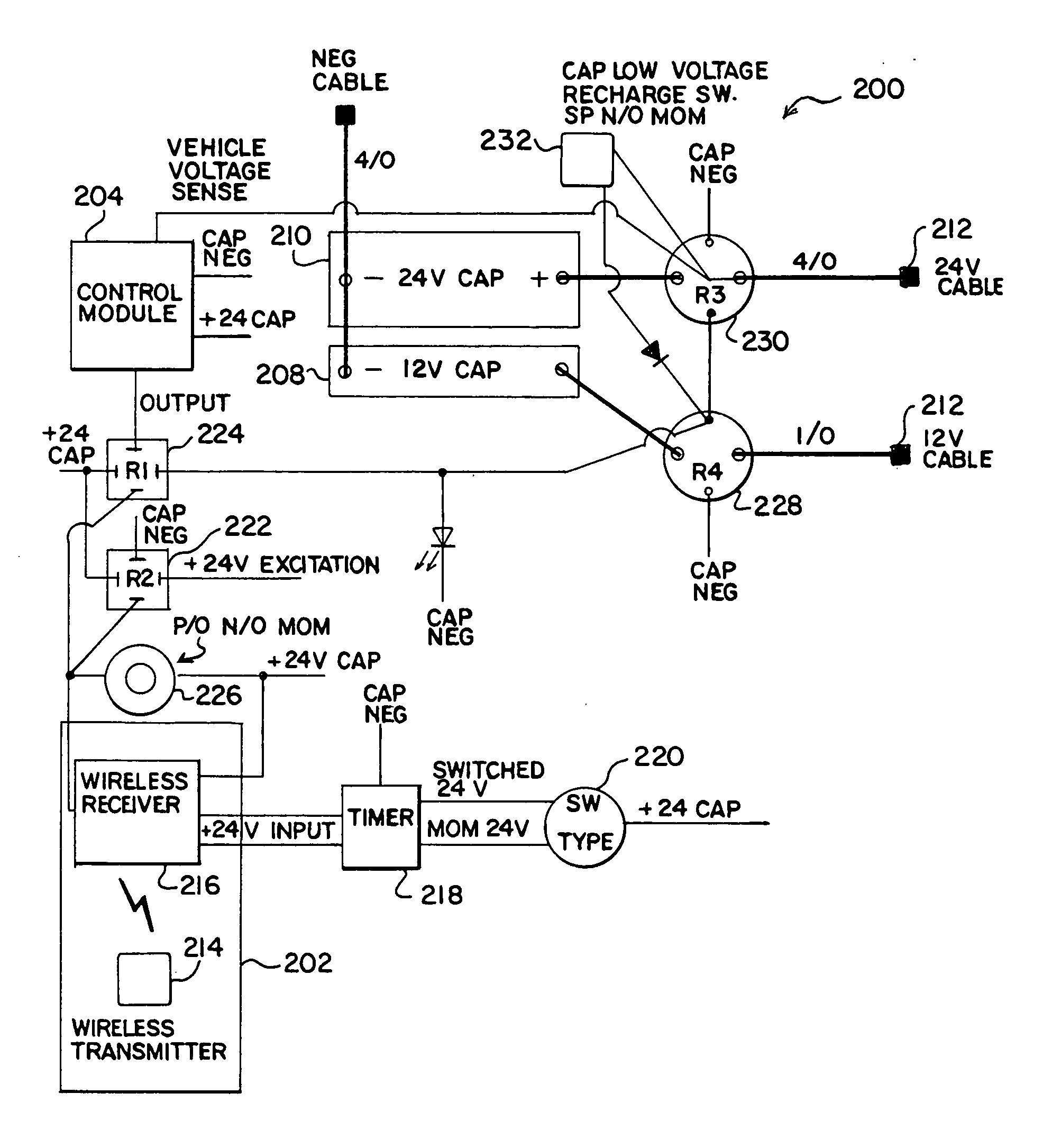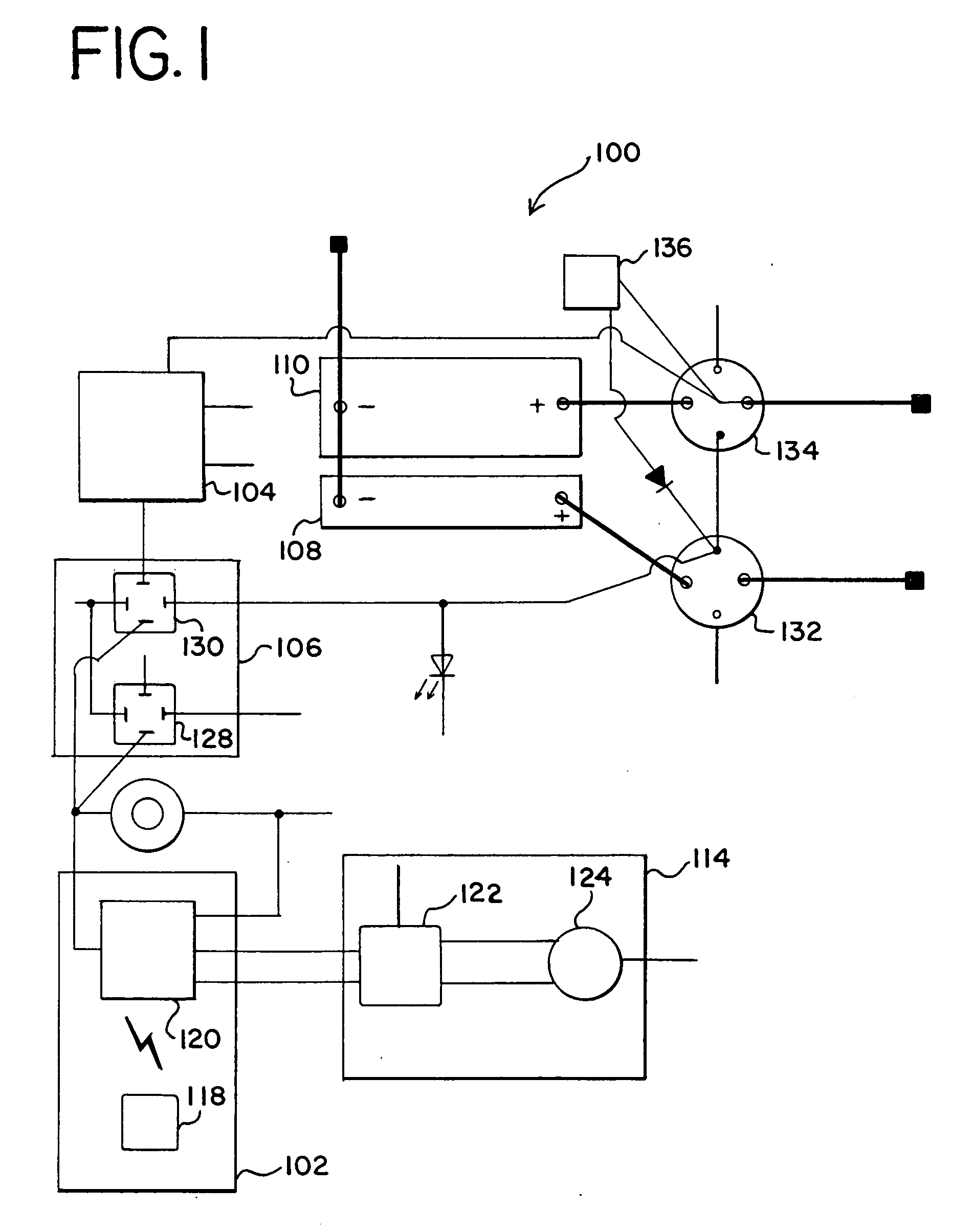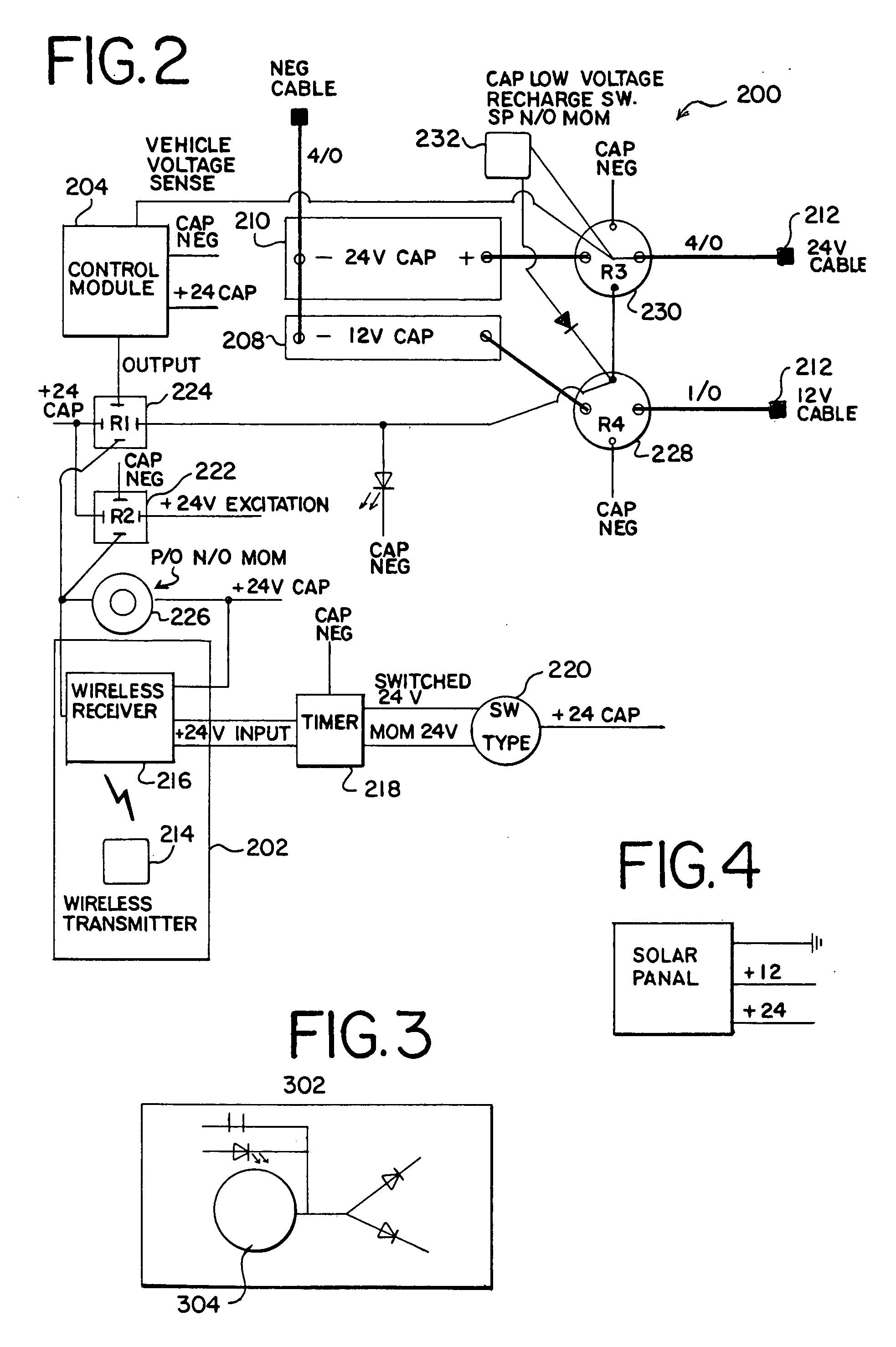Power management controller
a power management controller and power supply technology, applied in the direction of emergency power supply arrangements, safety/protection circuits, light to electrical conversion, etc., can solve the problems of depleting the battery used to start the vehicle, the additional battery may not provide the needed current for a sufficient period of time, and the additional battery may not provide the needed current for the engine load or ancillary load of the other powertrain. to achieve the effect of facilitating the flow of curren
- Summary
- Abstract
- Description
- Claims
- Application Information
AI Technical Summary
Benefits of technology
Problems solved by technology
Method used
Image
Examples
Embodiment Construction
[0019] A portable charging system is capable of sourcing power to start a vehicle and support other vehicle systems. The system may provide one, two, or more separate voltage ranges. Some voltage ranges maybe suitable to start a vehicle such as a passenger vehicle (e.g., a car), a truck, a bus, or heavy duty vehicles. Other voltage ranges maybe suitable to turn on engine management, audio, telematics, occupant safety, consoles, and other systems or combinations of systems. The charging system may include a wireless interface, audio and / or visual reverse polarity protection, and a power management system.
[0020]FIG. 1 is a partial block diagram of the portable charging system 100. The portable charging system 100 includes a wireless controller 102, a second controller or control module 104, electrical and mechanical switches, and a plurality of boost modules 108 and 110. The wireless controller 102 sends and receives data through radio, optical signaling (e.g., infrared) or some othe...
PUM
 Login to View More
Login to View More Abstract
Description
Claims
Application Information
 Login to View More
Login to View More - R&D
- Intellectual Property
- Life Sciences
- Materials
- Tech Scout
- Unparalleled Data Quality
- Higher Quality Content
- 60% Fewer Hallucinations
Browse by: Latest US Patents, China's latest patents, Technical Efficacy Thesaurus, Application Domain, Technology Topic, Popular Technical Reports.
© 2025 PatSnap. All rights reserved.Legal|Privacy policy|Modern Slavery Act Transparency Statement|Sitemap|About US| Contact US: help@patsnap.com



